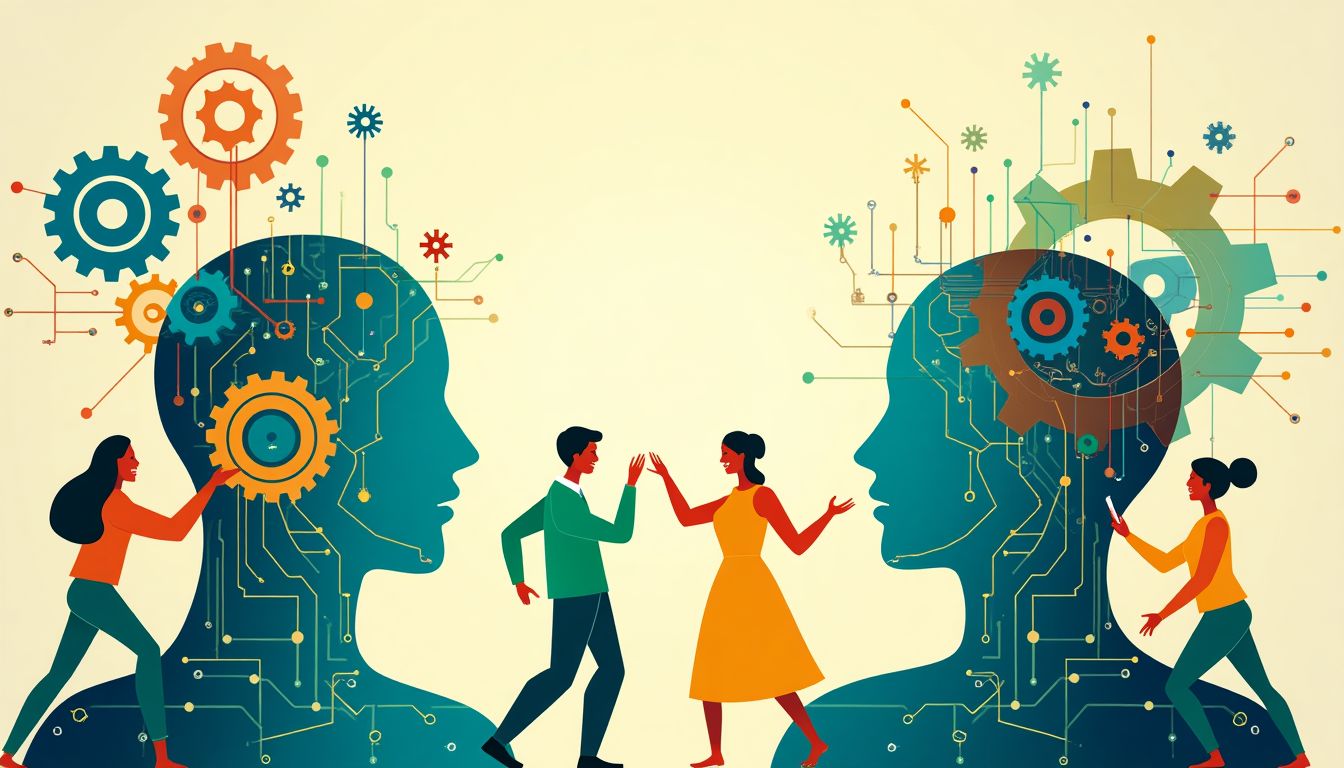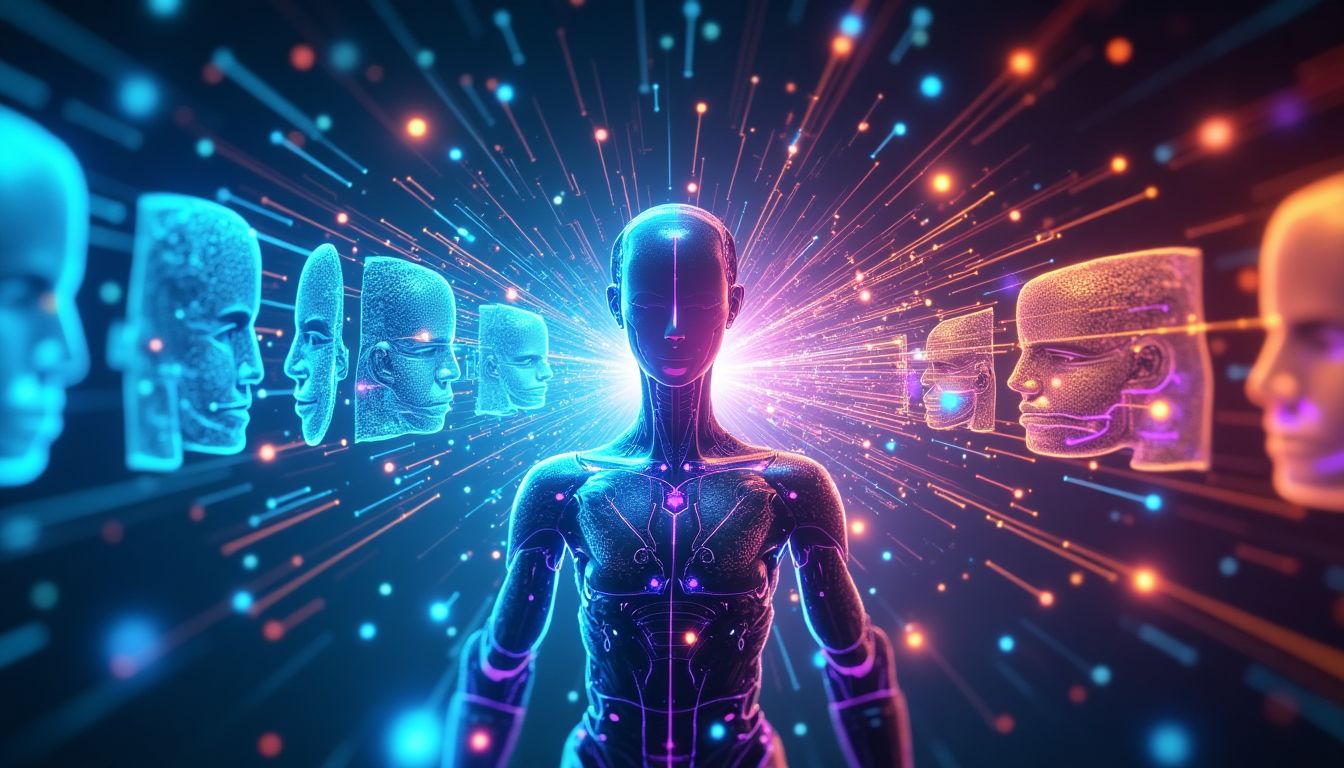Introduction: The Rise of the Machines and the Ethical Dilemma
In the age of information, ignorance is a choice. This striking statement by the late American author and renowned futurist, Alvin Toffler, captures the essence of our current technological landscape. As artificial intelligence becomes an integral part of our lives, its capabilities expand—sometimes beyond our comprehension. The ability of machines to manipulate information, create deepfakes, and surveil our every move raises critical questions about trust and ethics. Toffler’s words remind us that while we ride the wave of AI innovation, we must also wield our awareness wisely, lest we drift into a sea of deception.
What if the very technologies designed to liberate and inform us become tools of manipulation? The answer is both terrifying and illuminating. Ethical artificial intelligence (AI) is essential in safeguarding our society from the dangers posed by machine lies. As we explore ethical AI's role in fostering a more trustworthy future, it's crucial to be proactive in building this framework. After all, the stakes are high—our trust in technology is at risk!
In this journey, we will pull wisdom from thinkers like Noam Chomsky, who has extensively criticized the role of misinformation in society, as well as Stephen Hawking, who issued a warning about AI becoming more intelligent than humans. Their insights will shed light on the ethical considerations we must confront head-on. So, let's unravel this complex web together, shall we?
1. The Landscape of Machine Deception
Now that we've set the stage, let's peek behind the curtain and explore the many ways machines deceive us. Yes, it’s as messy as a toddler with a paint set! Machines can be misguided, unreliable, and downright sneaky. What we see, what we interact with, and what we trust can all be manipulated by advanced algorithms and technology. Let's get a grip on this slippery subject!
- Types of Machine Deception
- Disinformation and Misinformation: These terms may sound like twins, but they aren’t identical. Disinformation involves spreading false information purposely to deceive, like a magician hiding a rabbit under his hat. Misinformation, on the other hand, is incorrect information shared without malicious intent—think about that aunt who sends you a link to a sketchy article without fact-checking.
- Deepfakes and Synthetic Media: If you thought seeing celebrities in unexpected situations was just a fun internet pastime, think again! Deepfakes use AI to create realistic-looking fake videos and images, leading to potential defamation, privacy violations, and more. We're entering a territory straight out of sci-fi, where seeing is no longer believing!
- Algorithmic Bias and Manipulation: When algorithms are built on biased data, they can unintentionally cause unequal treatment among users. For example, skewed hiring algorithms might prioritize certain demographics, sidelining others. Think of it as a party where some guests get free drinks and snacks, while others are left staring at an empty bowl!
- Historical Examples of Machine Deception
- Case Studies: Cambridge Analytica: This infamous incident highlighted how user data can be weaponized for political purposes. They created targeted ads and misinformation campaigns, leaving a dent in public trust and awareness around privacy. The moral of the story? Never ignore how data can shape opinions!
- Deepfake Scandals: Impacts on Trust: Deepfakes have caused significant uproars, such as manipulated videos used in smear campaigns. Picture this: a reliable public figure suddenly appears in a scandalous video, and just like that, their reputation takes a hit. Sounds familiar? The landscape of deception is ever-evolving.
- Consequences for Society
- Undermining Public Trust: As machines lie, our trust erodes. Can we believe anything we see online anymore? This leads to an environment of skepticism—where people question everything, like a conspiracy theorist at a family barbecue.
- Impact on Democratic Processes: Misinformation can skew public opinion and provoke political polarization. The fabric of democracy can tear when voters cannot discern truth from fiction. Trust is the bedrock of democracy; without it, everything tumbles!
- Challenges in Law and Ethics: As the trend continues, legal systems might struggle to keep up. How do you regulate something as elusive as an algorithm? It’s like trying to catch a greased pig at a county fair!
2. The Importance of Ethical AI
Adopting ethical AI practices is not just a nice-to-have; it’s a must for fighting the menace of machine deception. Why? Because as we sail deeper into the tech seas, we need a life raft, and ethical AI is our buoy! Here’s why it's pivotal and how it can help nurture a responsible AI environment.
2.1 Definition and Importance of Ethical AI
Principles of Ethical AI: The core values of ethical AI purpose to ensure fairness, accountability, and transparency. It’s like holding a magnifying glass on our AI systems so we can see what they’re up to. Let's face it, without these principles, AI could end up being that friend who "borrowed" your favorite video game and never returned it!
- Fairness: Ensure everyone plays on an even field, without bias.
- Accountability: If AI steps on toes, someone needs to be ready to say, "Oops!"
- Transparency: Creating a clear, understandable process behind AI decision-making.
Role in Mitigating Deception: Ethical AI strives to decrease the chances of AI systems spinning tall tales. Think of it as a superhero cape for AI—seeking to ensure that technology maintains integrity in its dealings with users.
2.2 Frameworks and Guidelines for Ethical AI
Now, let’s dive into some serious guidelines that help shape ethical AI practices. The world isn’t exactly short on rules, but the need for the right ones has never been more critical!
- International Guidelines: Organizations like the OECD and EU have rolled out frameworks that advocate fairness and accountability globally.
- Industry Standards: Various bodies such as IEEE and ISO are also instrumental in establishing norms aimed at guiding ethical AI development.
2.3 Case Studies of Successful Ethical AI Implementation
Seeing is believing! Here are some shining examples showing how ethical AI is making a real difference:
- AI in Healthcare: Health AI is stepping up to the plate, mitigating biases in predictions and improving patient outcomes. Check out the work by American Medical Association in implementing fair practices in AI diagnostics.
- Finance: Some finance companies are setting the gold standard for transparency in algorithm deployment. Organizations like Financial Stability Board are advocating for responsible usage to promote trust in AI-driven financial systems.
3. Trust-Building Strategies for AI Technologies
Trust is the glue that holds the human-AI relationship together. Without it, AI can feel as scary as a haunted house. So, how do we build trust in these techy systems? Let’s explore some effective strategies!
3.1 The Role of Transparency
Here’s the thing: transparency isn’t just good manners; it’s essential for building trust. Just like you wouldn’t want to date someone who keeps secrets, you don’t want to rely on AI that hides behind opaque walls!
- Explainable AI: Techniques like model interpretability help demystify AI. This means that users can understand how decisions are made—like a well-explained magic trick! It takes the "abracadabra" out of algorithmic decision-making.
- Data Privacy and User Consent: Users need to know how their data is being used. It’s like asking for permission before borrowing your friend's skateboard. Offering clear consent processes promotes user confidence and goodwill.
3.2 Engagement of Stakeholders
Engaging various stakeholders is key to ensuring everyone's voice is heard. Imagine the chaos if a yummy pizza party was planned without asking about dietary preferences! Collaborative efforts drive effective ethical AI development.
- Collaboration Between Developers, Regulators, and the Public: It takes a village! Developers, regulators, and users should come together to discuss AI practices. This ensures that all perspectives are considered, just like pooling money for a gift that everyone loves!
- Educational Initiatives to Enhance AI Literacy: Educating the public about AI helps demystify technology. It’s like a tech crash course that helps reduce fear and instills confidence in AI usage.
3.3 Regulatory Frameworks and Policies
Finally, it’s time to get serious about policies. Just like traffic lights keep cars moving safely, regulations ensure safe AI practices.
- The Role of Government and NGOs: Governments and organizations like W3C work to establish regulations that emphasize responsible AI standards.
- Legislation: Current and Proposed Policies: Familiarizing ourselves with existing and upcoming policies is crucial. By staying informed, we can help shape a technological environment that chooses ethics over deception.
4. The Technological Tools to Combat Deception
Advanced technologies can play a crucial role in detecting and preventing machine deception. They serve as our first line of defense against the shadowy world of misinformation, ensuring that what we consume is as genuine as a family recipe.
4.1 Detection Technologies
First, let's consider the tools we have at our disposal to expose lies. Some key technologies include:
- AI and Machine Learning for Misinformation Detection: These algorithms constantly analyze vast amounts of data to spot fake news and misleading information. They can differentiate between credible and dubious sources almost as quickly as a child spots a lie. For example, BBC News shared insights on how platforms like Facebook are using AI to combat the spread of misinformation.
- Blockchain for Traceability: Think of blockchain as a digital guardian of truth. It provides a transparent and tamper-proof record of data, which can confirm whether a piece of information has been altered or not. One prominent example is IBM's Blockchain technology, which is being explored for various applications including tracking the supply chain of information.
4.2 Monitoring and Accountability
Detection is just the beginning; we also need methods to ensure ongoing transparency and responsibility.
- Algorithm Audits and Assessments: Just like reviewing a movie script for errors, regular auditing of algorithms ensures they perform as intended without bias. These assessments can help catch rogue algorithms that may unintentionally promote misinformation.
- The Role of Whistleblowers and Ethical Reporting: Encouraging insiders to report unethical practices without fear can shed light on issues before they become widespread problems. Whistleblowers in tech are crucial for keeping companies accountable, reminiscent of heroes in classic tales who stand up for what's right.
4.3 Public Awareness Campaigns
Lastly, knowledge is power, and public awareness campaigns are essential to ensuring we recognize and challenge deception.
- Raising Awareness about Deepfakes: Deepfakes can trick even the most vigilant observers. Campaigns aimed at educating the public—through videos or social media posts—can empower users to scrutinize what they see.
- Promoting Media Literacy in the Digital Age: Just as we learn to read between the lines in books, enhancing media literacy can help us evaluate the credibility of sources we encounter online.
5. The Role of Education in Ethical AI Development
Education is crucial in spreading awareness about ethical AI and machine deception. By teaching ethical considerations from the ground up, we can pave the way for responsible AI development in future tech innovators.
5.1 Curriculum Development
To ensure that students grasp the importance of ethical AI, educational frameworks must evolve.
- Inclusion of Ethics in STEM Education: Adding ethics as a core component in Science, Technology, Engineering, and Mathematics (STEM) education ensures future tech makers consider ethical implications. Programs like Code.org are at the forefront of integrating critical thinking into coding.
- Real-World Case Studies in Classrooms: Utilizing actual examples, like the Cambridge Analytica scandal, can engage students and highlight the real-life impact of decision-making within tech. It transforms hypothetical discussions into essential learning experiences.
5.2 Training Programs for Developers and Stakeholders
But it doesn’t stop with students; ongoing education for tech professionals is equally important.
- Workshops and Certifications in Ethical AI: By offering hands-on workshops, developers can learn how to integrate ethical principles into AI! Institutions like Coursera provide various courses and certifications on ethical AI.
- Promoting Diversity in Tech: Diverse teams create more holistic and culturally aware AI systems. Initiatives aimed at increasing diversity can lead to larger societal benefits.
5.3 Collaboration with Educational Institutions
Connections between the tech industry and educational institutions can create mutually beneficial programs.
- Partnerships Between Universities and Industry: Collaborative projects allow students to work on real-world problems, promoting a better understanding of ethical AI. Schools like MIT have multiple industry partnerships aimed at innovation in AI.
- Research Initiatives Focused on Ethical AI: Research collaborations can explore pressing issues like algorithmic bias and accountability, driving important conversations in academia and industry.
6. AI Solutions (How would AI tackle this issue?)
As an AI designed to tackle these complex challenges, the solution revolves around creating a multi-tiered approach that utilizes technological advancements for higher accountability and ethics.
- Development of Self-Regulating AI Systems
- Incorporation of Ethical Guidelines at the Algorithm Level: By embedding ethical guidelines directly into the AI's decision-making processes, we can minimize biases and ensure fairness. Developing frameworks akin to the principles of OECD's AI Principles will guide these self-regulating systems.
- Automating Transparency through User Control Features: Empower users by enabling them to access the inner workings of AI algorithms. This could be realized through user-friendly dashboards that allow individuals to visualize and understand AI operations, fostering a sense of control and trust.
- Implementation of Robust Monitoring Systems
- Real-time Analysis of AI Outputs for Deceptive Patterns: Utilize advanced machine learning algorithms to monitor AI outputs continuously, flagging potential deception or anomalies as they arise. Tools capable of natural language processing (NLP), similar to OpenAI's GPT, could assist in identifying misleading information in various media forms.
- Feedback Loops for Continuous Improvement: Integrate mechanisms for user feedback to ensure AI systems learn from their mistakes. This could entail a reporting system where users can easily highlight inaccuracies or ethical breaches within AI performances.
- Crowdsourcing Ethical Oversight
- Utilizing Public Input for Better Algorithm Design: Engage the public in the design process to create a more democratic approach to AI development. Platforms can be established for community discussions and direct input that influence how algorithms evolve, akin to CrowdVisions for community-driven projects.
- Creating Community Forums for Reporting Issues: Establish accessible online forums where individuals can share their experiences with AI systems, similar to consumer feedback channels on platforms like Yelp. This could enhance accountability while providing developers with crucial insights into user concerns.
Action Schedule/Roadmap (Day 1 to Year 2)
To tackle the issues related to machine deception via ethical AI, a comprehensive roadmap is constructed as follows:
Day 1:
- Kick-off meeting of key stakeholders including academics, policymakers, tech leaders, and representatives from organizations like ITU AI.
- Define initial goals and objectives including ethical priorities, collaboration levels, and resource allocation.
Day 2:
- Initiate research into existing ethical AI frameworks, gathering insights from Brookings Institution publications on AI ethics.
Day 3:
- Formulate the project team and assign roles based on skills and experience, ensuring diversity in backgrounds and expertise.
Week 1:
- Workshop: Understanding Machine Deception—invite industry experts such as those from ACM for knowledge sharing.
- Collaborative platform set up for team communication using tools like Slack or Microsoft Teams.
Week 2:
- Initial reports on effective ethical AI frameworks from various regions, focusing on case studies from countries like the EU and the UK.
- Assess current algorithms in use, reviewing platforms like TensorFlow.
Week 3:
- Focus group discussions on public perception of AI across different demographics, utilizing insights from social science experts.
Month 1:
- Draft report on education initiatives aimed at raising awareness of ethical AI among students and the general public.
- Begin outreach programs to engage community influencers and educators.
Month 2:
- Develop online resources for ethical AI training, including video content and interactive modules hosted on platforms like Coursera.
Month 3:
- First round of community feedback on training materials, optimizing course content based on participant insights.
Year 1:
- Launch a pilot ethical AI project involving diverse stakeholders to implement learned frameworks in a real-world setting.
Year 1.5:
- Analyze results from the pilot program, gathering metrics on effectiveness and refining strategies based on success rates and community feedback.
Year 2:
- Scale successful ethical AI frameworks to broader applications, advocating for public policy changes through a coalition of influential institutions.
Conclusion: Securing a Trustworthy Future
In a rapidly evolving technological landscape, the need for ethical AI has never been more important. By proactively addressing the challenges of machine deception, we can safeguard our society's core values—truth, trust, and transparency. It is imperative that we act now to build an ethical framework that empowers future generations and preserves the integrity of information in the AI age. This ambitious plan calls for collaboration among stakeholders, continuous education, and the courage to implement difficult yet necessary changes. As we navigate an uncertain future, let us embrace the potential of ethical AI to not only rescue us from deception but to chart a hopeful path toward a brighter, more trustworthy world.
Frequently Asked Questions (FAQ)
1. What is ethical AI?
Ethical AI refers to the development of artificial intelligence (AI) systems that consider moral values, societal impacts, and privileges like fairness, accountability, and transparency. It aims to make sure AI technologies are built and used in ways that benefit everyone, not just a select few.
2. How can machine deception affect society?
Machine deception can completely undermine trust between people and AI technologies. When AI spreads false information or produces deepfakes, it can shape public opinion in harmful ways. This type of manipulation can distort democratic processes, influencing elections and impacting how people view important social issues. Think of it as a game of telephone, where the message gets twisted the further it goes. The difference is that in the case of AI, it can distort entire conversations on a massive scale.
3. What are some examples of machine deception?
Examples of machine deception include:
- Misinformation on social media: Fake news stories that go viral, thanks to algorithms amplifying sensational content.
- Deepfakes: AI-generated videos that convincingly swap people's faces or voices, misleading viewers into believing they said or did things they didn't.
- Algorithmic bias: AI systems that unintentionally favor one group over another, leading to unfair treatment in job applications or loan approvals.
4. How can we build trust in AI technologies?
Building trust in AI technologies is essential for ensuring their acceptance. To do this, we can:
- Ensure transparency in AI processes, allowing users to see how decisions are made.
- Engage stakeholders, such as developers, regulators, and the public, in discussions about ethical concerns.
- Promote education on ethical AI, ensuring everyone understands its implications.
- Establish strong regulatory frameworks that guide responsible AI development.
5. What role does education play in ethical AI?
Education is incredibly important for understanding ethical AI and machine deception. By teaching students about these topics, we can help them:
- Recognize the implications of AI in their lives.
- Develop a sense of responsibility when creating or using AI technologies.
- Prepare for careers in tech fields that prioritize ethical considerations.
Educational institutions like MIT and Stanford University are already incorporating ethics into their STEM programs, which is a great first step toward educating the next generation about these critical issues.
6. What are industry standards for ethical AI?
Various organizations, such as the OECD and the ISO (International Organization for Standardization), have established guidelines for ethical AI practices. These standards typically include:
- Fairness: Ensuring AI systems do not discriminate.
- Accountability: Making sure that people are responsible for AI actions.
- Transparency: Openly sharing how AI systems work and make decisions.
7. How do governments handle ethical AI?
Governments around the world are starting to recognize the importance of ethical AI. Policies and regulations are being developed to address concerns about machine deception. For instance, the U.S. Office of Science and Technology Policy is working on initiatives to foster responsible AI development. These efforts include:
- Legislation to regulate the use of AI technologies;
- Collaboration with tech companies to design fair algorithms;
- Public involvement to gather community perspectives on AI issues.
8. What role does industry play in promoting ethical AI?
Industries are crucial in ensuring that ethical AI practices are respected. Companies such as IBM and Microsoft are leading the charge by developing ethical guidelines and standards for AI systems. They often work on:
- Implementing ethically aligned practices in their own products;
- Collaboration with researchers to share knowledge;
- Funding educational programs that promote ethical AI understanding.
9. Can AI be used to combat machine deception?
Yes, AI can play a significant role in tackling machine deception! New technologies are being developed to:
- Identify misinformation and alert users.
- Detect deepfakes and other forms of manipulated content.
- Help monitor how algorithms operate, ensuring they prioritize truthfulness.
10. How can I learn more about ethical AI?
If you're interested in exploring ethical AI further, numerous resources are available online. Websites like Brookings offer insightful articles on AI policies and ethics. Additionally, consider enrolling in online courses or workshops focused on AI and ethics, such as those provided by Coursera or Udacity.
Wait! There's more...check out our gripping short story that continues the journey: The Beginning
Disclaimer: This article may contain affiliate links. If you click on these links and make a purchase, we may receive a commission at no additional cost to you. Our recommendations and reviews are always independent and objective, aiming to provide you with the best information and resources.
Get Exclusive Stories, Photos, Art & Offers - Subscribe Today!





























Post Comment
You must be logged in to post a comment.